Black Sea Shipyard: the decline of production
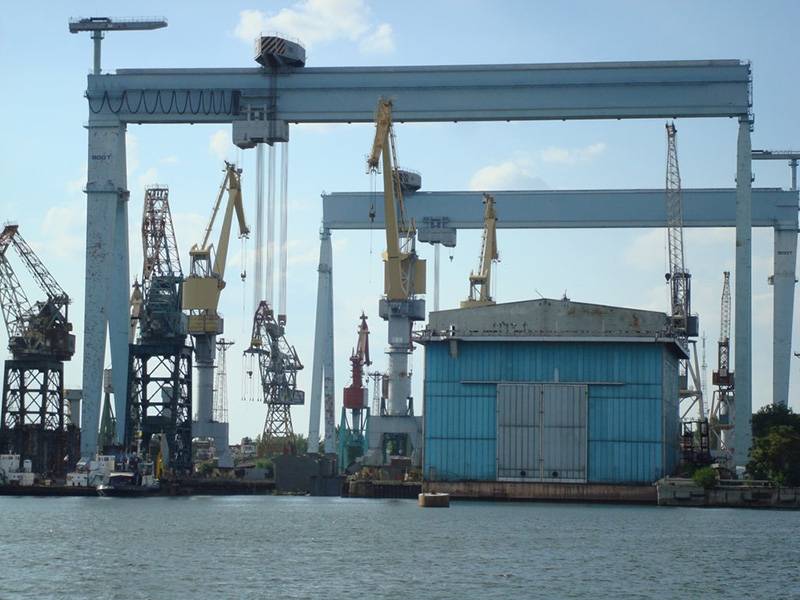
In the autumn of 1988, at the Black Sea Plant for the first time in stories domestic shipbuilding was laid atomic heavy aircraft carrier cruiser "Ulyanovsk". It was supposed to build a series of 4 units of such ships, which would bring the Soviet fleet to a new qualitative level.
However, just at the time when the plant reached such high rates, serious problems began in the country for which it worked. In the second half of the 80's. Evidently the increasingly accelerated destruction of the USSR began. The Soviet Union needed to be modernized and reformed, and at first the process, with the light hand of a new talkative Secretary General, was called "restructuring." However, very soon this word in the context of the current situation in the country became synonymous with a catastrophe.
The Black Sea plant was at that time loaded with orders. Passions and passions of various congresses of deputies of varying degrees of “nationality” raged somewhere in Moscow, Mikhail Gorbachev continued to tire the listeners with vague speeches that became less and less meaningful and wasted time. And in Nikolaev they still built aircraft carriers. The country still maintained unity, and materials and components from subcontractors came to the plant from all its distant and near edges.
But now the ever-growing gusts of cold and evil wind of change began to penetrate beyond the high walls of the plant. Prices went up, inflation started before, it seemed, an unshakable ruble. If at initial calculations the cost of building a heavy aircraft carrier cruiser "Varangian" was a considerable amount of 500 million, then by 1990, she confidently took the billion mark and quickly overcame it. Even uninterrupted until recently, the delivery of necessary equipment and materials have now become more chaotic. Not all delays could now be attributed, as before, to disorderly behavior that is not uncommon in production issues.
Socio-economic relations in society began to transform - the mass creation of cooperatives began, into which initiative and skilled workers and employees began to leave. However, the matter has not yet reached a mass outflow of personnel from the plant. By the summer of 1990, in addition to the heavy aircraft carrier cruiser Varyag and the unlocked nuclear heavy aircraft carrying cruiser Ulyanovsk, which was on the slipway, the factory had a reconnaissance explorer for reconnaissance exploration, which had a recon team, which will carry out the recons, which will carry out the recons, which will carry out the recons. "Dnieper." The latter was to become a ship for underwater lighting, for which a unique hydroacoustic station “Dniester” was provided with a lowered antenna.
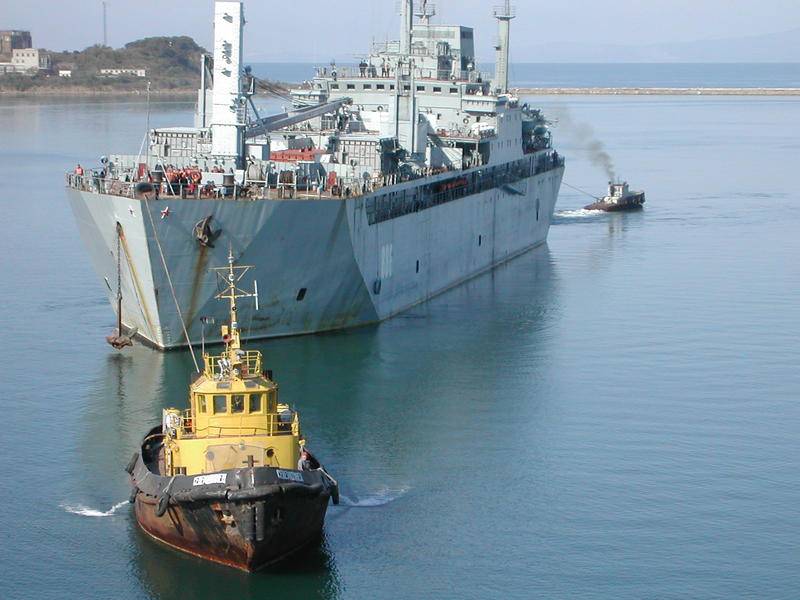
On all of these ships, regular shipbuilding work was carried out, although, of course, priority was given to heavy aircraft-carrying cruisers. In parallel, the plant carried out orders for the national economy. Continuously operated shop assembly of large fishing trawlers.
August 1991 of the year forced destructive processes in the state mechanism, which at that time became almost reversible. In the same month, Ukraine declared its independence unilaterally. The enthusiasm of politicians and a significant part of society clearly gave joyful cheerfulness. Pre-election campaign before the proclaimed referendum and the election of the first president was exclusively at one gate. The combination of theses and arguments, most of which should have stirred the imagination and the digestive tract, boiled down to the slogan: “To be rich, you have to be Square!”
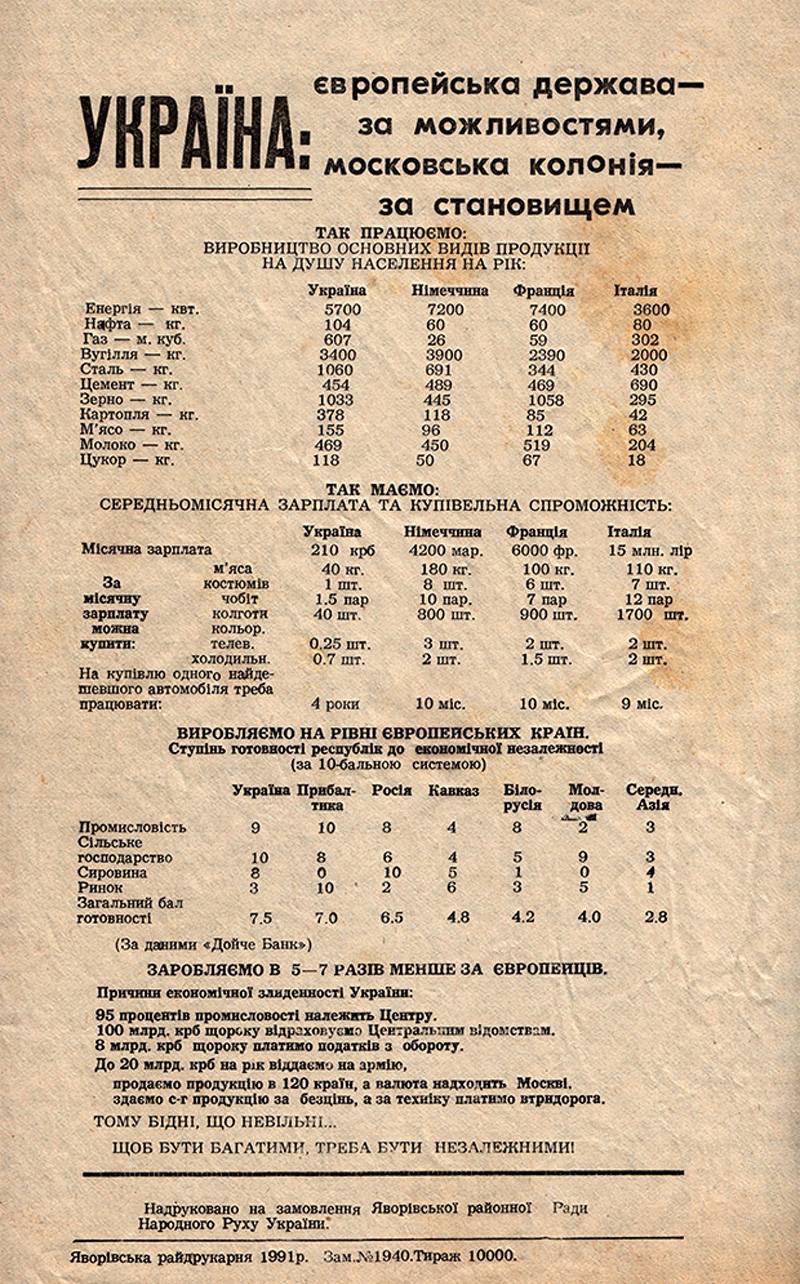
Some idealists, taking a sip of the air of "freedom", still hoped that in the new reality there would still be a place for the then powerful Ukrainian industry. Leonid Kravchuk in the framework of the election campaign did not fail to visit Nikolaev and the Black Sea plant. A sweet politician did not spare the honey for admiration for speeches, praises and especially promises. To the direct question of the factory workers whether heavy aircraft-carrying cruisers at the factory would be completed, Kravchuk answered without hesitation that, of course, they would. So the majority voted for Mr. Kravchuk, who seemed more “his” (and promised to build aircraft carriers), and not for his opponent — Vyacheslav Chornovol, who is known for his long-standing political dissidence.
Few people then could have imagined that the sugary sweetness of the promises of the future president would soon be replaced by bitterness of disappointment. Of the few who did not have the habit of wearing pink glasses with ease, was Yuri Ivanovich Makarov, director of the plant. Like no one else, he understood that how and where it is necessary to complete the most complex production process for the completion of heavy aircraft-carrying cruisers. I understood that without a clear, planned and centralized management of this process, it would have no alternative to end up with weeds in workshops and hissing of a gas cutter.
In October 1991, the navy, while still remaining a single structure, was forced to stop funding the construction of warships in the enterprise. For some time, by inertia, work was done on them, until they completely subsided. Makarov did everything he could, in that difficult and increasingly similar to the hopelessness of the situation. He took out the ministries and departments of Russia and Ukraine. He used all his numerous connections and channels, demanded, requested and persuaded.
As it turned out, no one was concerned about the unique warships that had remained virtually abroad. Moscow was fixated on its own problems - ahead was the division of a colossal Soviet legacy, reforms more similar to legalized robbery, the launch of prices for near-earth orbit and privatization. Kiev's politicians were even less interested in aircraft carriers of some sort — in their picture of the world view, this high achievement of engineering and design thought was prepared for a very insignificant place somewhere deep in the shadow of high mountains from bacon, which the citizens of Russia will no longer select and eat.
For the operation of such a large and large-scale plant, significant funding was required. The Kiev authorities have made it clear that in the new conditions, the plant will have to deal with such an annoying trifle as providing itself with orders. And for the completion of heavy aircraft-carrying cruisers from an independent already, but still not a poor state there is no means. The authority of the company was very high in the world - many foreign shipowners knew about its products not by hearsay. After all, back in Soviet times, the Black Sea Shipyard built trade ships for export to Western countries.
The first customers appeared. These were representatives of the Norwegian brokerage company Libek & Partners, who began negotiations on the construction of 45 thousand deadweight tankers at the plant for the Norwegian ship owner Arneberg. The shipyard has not built ships of this type since the 1950s, when construction was carried out. Kazbek type tanker series.
Director Yury Makarov was faced with a difficult choice: to put a Ulyanovsk station in 70% ready for descent in order to free the slipway, or to abandon the contract. The unfinished aircraft-carrying cruiser suddenly turned out to be unnecessary to anyone - neither Russia, nor even Ukraine. In the meantime, nimble business people from overseas appeared at the factory, offering to buy Ulyanovsk metal at the fabulous price of 550 dollars per ton. To celebrate, the Ukrainian government in early February 1992 of the year issued a decree on the disposal of the atomic heavy aircraft-carrying cruiser. The beginning of the agony of the first and, as it turned out, Yuri Ivanovich Makarov did not see the last Soviet aircraft carrier with a nuclear power plant - he fell seriously ill on January 4 1992.
Having turned into piles of bags of scrap metal, Ulyanovsk was no longer needed by buyers, who, as it turned out, were willing to pay no more than 120 dollars per ton. For many years, thousands of tons of metal lay all over the plant until finally they were able to sell.
"Dnieper" becomes "Slavutych"
In addition to the gigantic heavy aircraft-carrying cruisers, other ships under construction for the Navy experienced a difficult period of the collapse of the Soviet Union. fleet. One of them is the ship of the project 12884 "Dnieper". In 1987, the Chernomorets Central Design Bureau in Sevastopol, based on a large freezer trawler of Project 12880, developed a large reconnaissance ship on the topic "Corrugation".
The Black Sea Plant has already had experience building reconnaissance ships based on trawlers. Back in November, 1984, the company laid a large reconnaissance ship project 10221 "Kamchatka". A feature of this scout was the presence of an experimental towed radiating antenna of the coastal sonar complex "Dniester". The complex, which included “Kamchatka”, was able to detect submarines in 100 km by noise beam and up to 400 km - by echo pole. The detection accuracy was equal to 20 meters. The ship was equipped with a special lifting and lowering device.
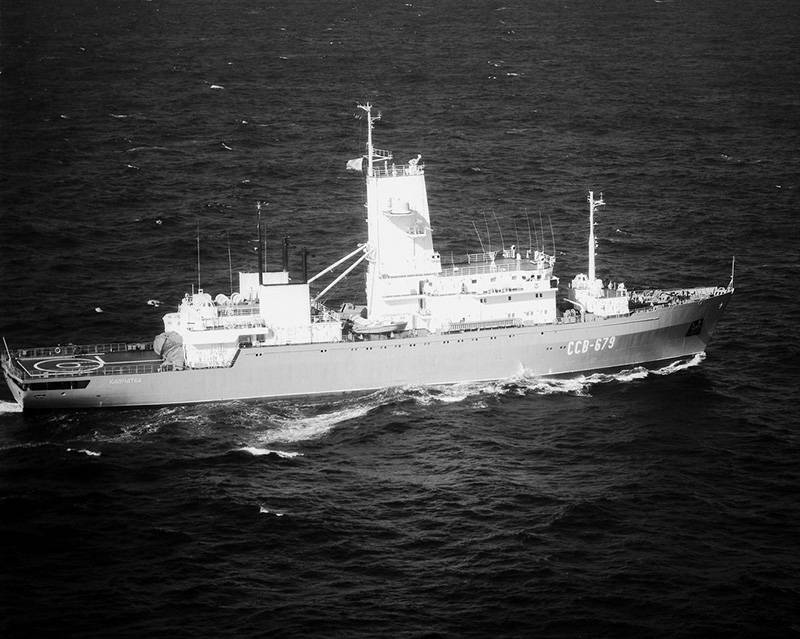
This complex and unique equipment was manufactured at the Black Sea Shipyard. The lifting and lowering device was not a simple winch. It was a complex and laborious engineering structure. Initially, his tests were supposed to be carried out at sea with a special mockup that imitated an antenna. However, to save time, it was decided to go the other way. The Kamchatka building should have been assembled in three parts. The middle part, where the lift-down device was located, was assembled on the pre-stove plate of the building berth number 1. After assembly and installation, statistical tests were performed, and 900-ton gantry cranes were used to simulate rolling. The docking of the three parts of the hull was made later in the factory transfer float, alternately rolling the fore and aft hull parts on it. The middle part was installed using floating cranes. Such a difficult operation significantly reduced the time of testing the ship. Entering into service in the 1986 year, "Kamchatka" went to the Far East, and became part of the Pacific Fleet.
The 12884 project ship, like the Kamchatka, was a large reconnaissance ship, or a ship for underwater lighting. From its “progenitor,” a large freezer trawler, it should differ only in a narrow and high superstructure above the upper deck, where the lifting and lowering device should be located. For lowering and raising the antenna of the complex "Dniester" inside the case there was a passable shaft closed from below. The reconnaissance total displacement was 5830 tons.
Work on the preparation for the construction of "Dnieper" (so it was decided to call the new intelligence) began on January 1 1988, on the stocks 1 number. At that time, at that moment, the floating bases of the nuclear submarines of the 2020 project were being built, and the ship had to be squeezed into a tight slipway schedule. The 12884 project hull, or 902 order, was laid out in August 1988, and in 1990, it was launched. By the end of 1990, Pridniprovya’s readiness was about 46%. In contrast to Kamchatka, it was built for service in the Northern Fleet. The rate of work on it was subsequently reduced in favor of concentrating production resources on the Varyag and Ulyanovsk heavy aircraft carrying cruisers.
In the autumn of 1991, the financing of the 902 order, as well as other ships for the Navy, ceased. In the 1992 year, given the high degree of readiness of the Dnieper region, the Ukrainian authorities decided to complete the construction of the ship and introduce it into the fleet. However, no one was going to supply the independent state with a new and unique lowered antenna, without which its use for its intended purpose would become problematic. Considering the extensive premises provided for the installation of various reconnaissance equipment, the ship was proposed to be completed as a headquarters or command ship.
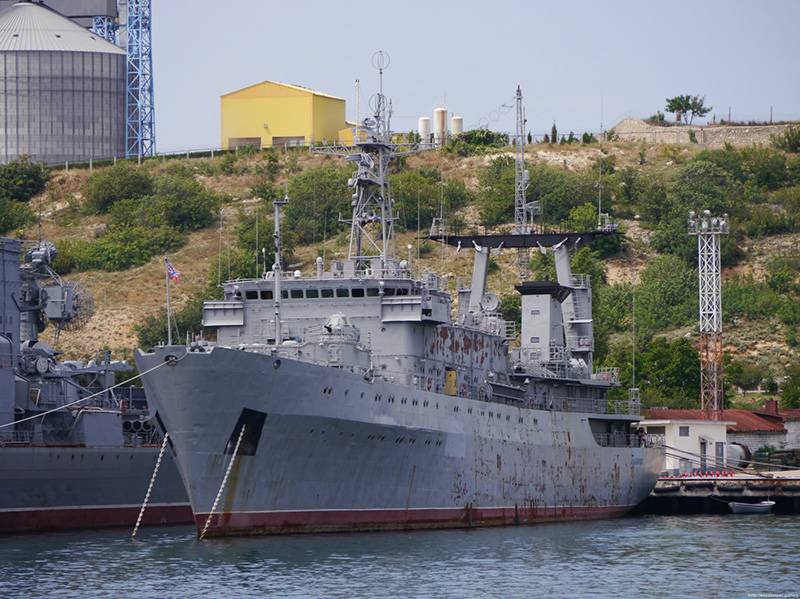
In August, 1992, it was renamed “Slavutych”, and in November of that year, the Ukrainian naval flag was hoisted on it. The service of Slavutych took place in numerous flag demonstrations, visits to ports of foreign countries and in numerous exercises, including with the ships of the NATO bloc. After the reunification of the Crimea with Russia, "Slavutich" remains in storage in Sevastopol. His fate has not yet been determined. Ironically, “Pridniprovye” - “Slavutych” turned out to be the last warship at the moment, fully completed by the Black Sea Shipyard.
Information